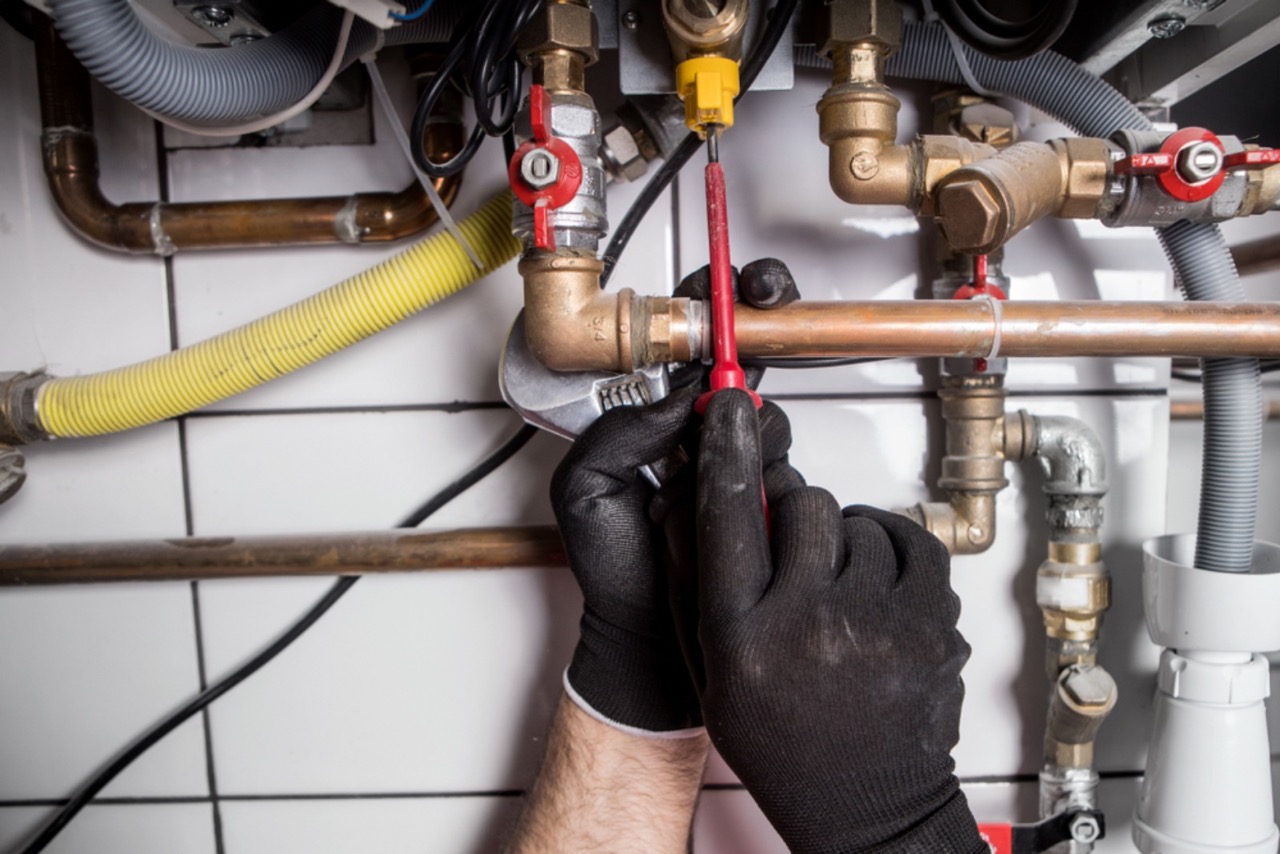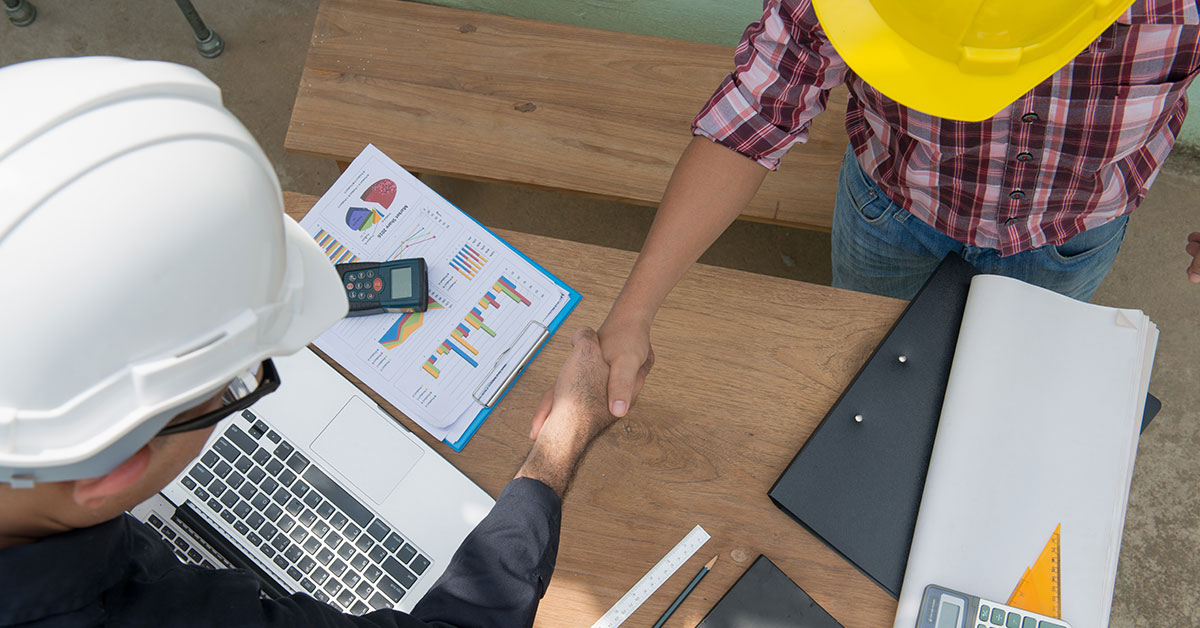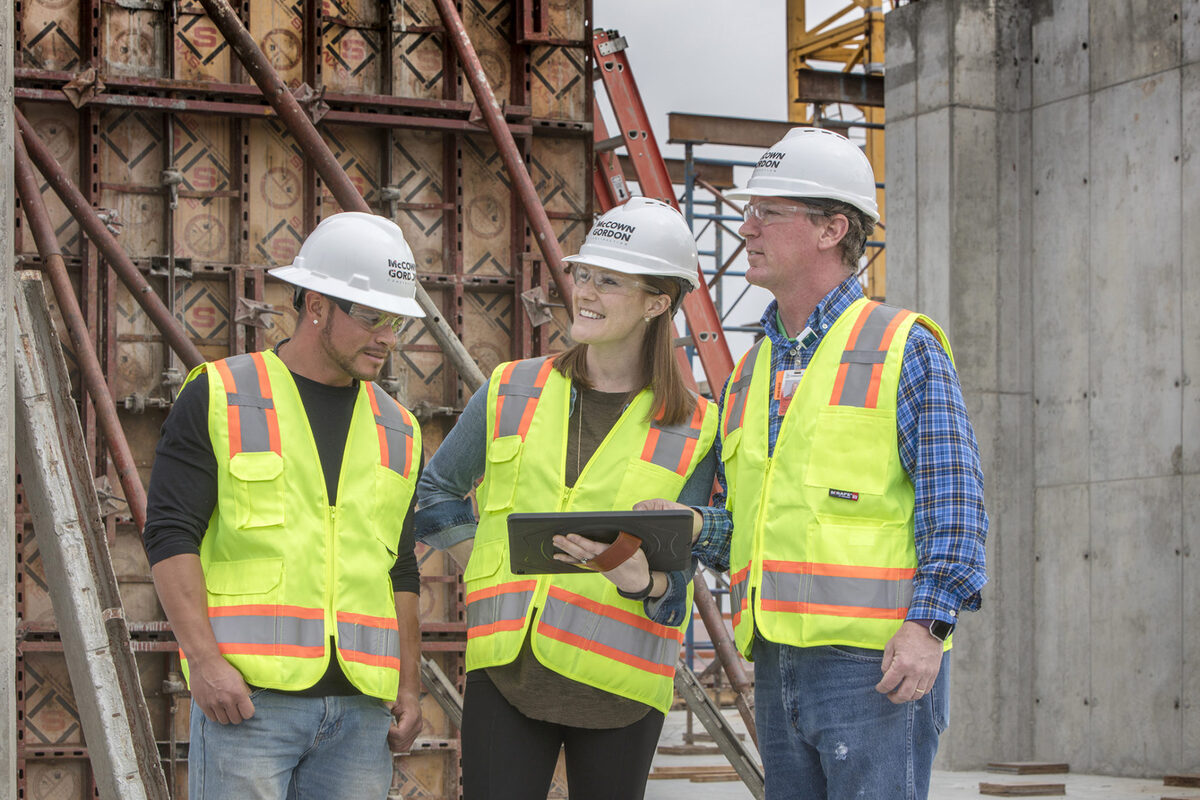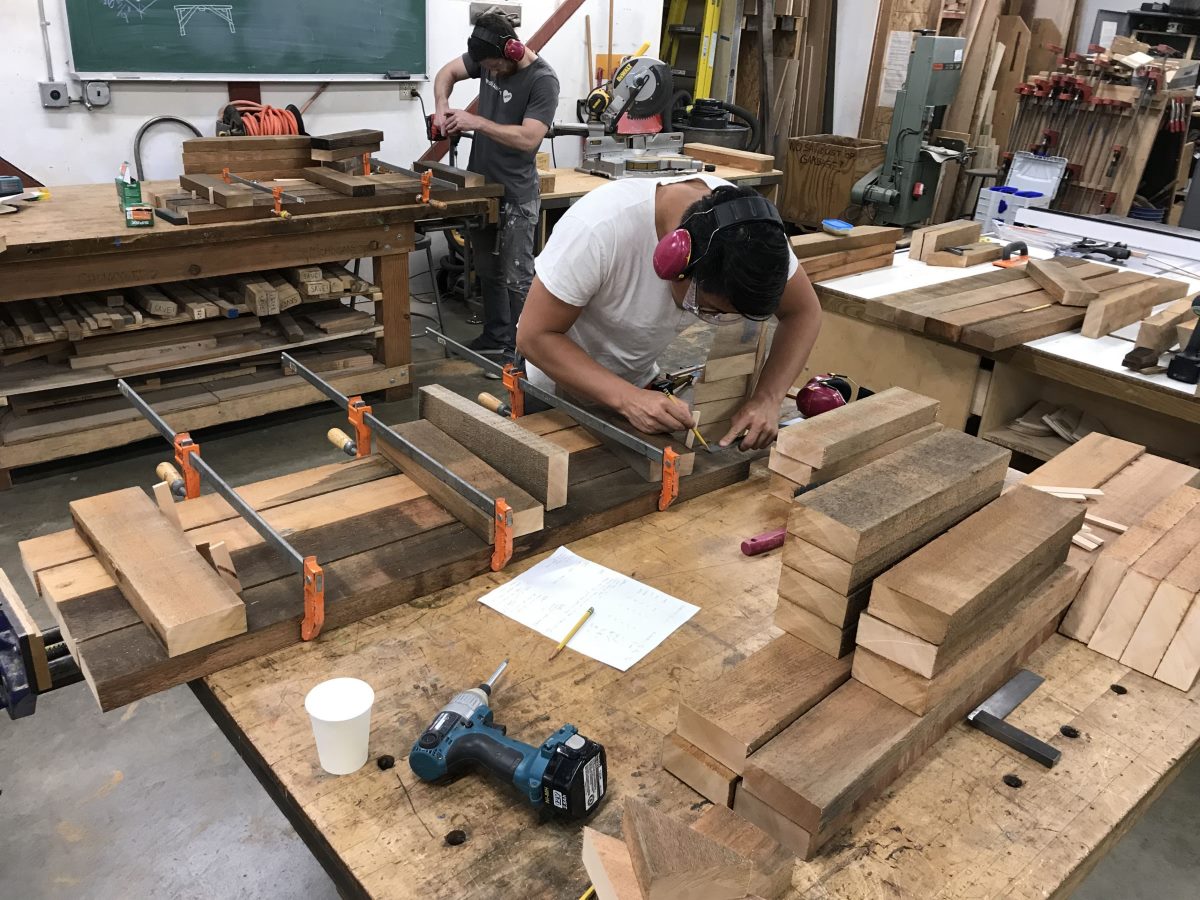

Articles
How To Bid Plumbing Jobs
Modified: December 7, 2023
Learn how to bid plumbing jobs with these helpful articles. Get tips and strategies for accurately estimating project costs and winning bids.
(Many of the links in this article redirect to a specific reviewed product. Your purchase of these products through affiliate links helps to generate commission for Storables.com, at no extra cost. Learn more)
Introduction
In the world of plumbing, bidding on jobs is a crucial skill that can determine the success and profitability of a business. Whether you are a plumbing contractor or a freelancer, knowing how to bid plumbing jobs accurately and effectively is essential.
Plumbing bids involve estimating the cost of labor, materials, equipment, and any additional expenses associated with a particular project. It requires a comprehensive understanding of the scope of work, as well as the ability to calculate costs accurately.
However, bidding on plumbing jobs is not just about crunching numbers. It also involves effective communication with clients, understanding their needs and requirements, and presenting a compelling bid that sets you apart from your competitors.
In this article, we will explore the key considerations and steps involved in bidding plumbing jobs successfully. We will discuss the necessary documentation, calculating labor costs, estimating material and equipment expenses, overhead and markup considerations, presenting the bid, dealing with changes and revisions, evaluating competitor bids, and finalizing the job agreement.
By following these guidelines, you will be able to submit well-constructed bids that not only meet the client’s expectations but also ensure profitability for your plumbing business.
Key Takeaways:
- Mastering the art of bidding on plumbing jobs involves understanding client needs, accurate cost estimation, and professional presentation to stand out from competitors and secure profitable projects.
- Effective communication, adaptability to changes, and thorough evaluation of competitor bids are essential for winning plumbing jobs and establishing long-term client relationships.
Read more: How To Bid A Siding Job
Understanding Plumbing Bids
Before diving into the process of bidding on plumbing jobs, it’s important to have a solid understanding of what a bid entails. A plumbing bid is a formal proposal submitted by a contractor or plumber to a client for a specific plumbing project. It outlines the scope of work, estimated costs, and any terms and conditions associated with the job.
When preparing a bid, it’s crucial to thoroughly review the project requirements and specifications provided by the client. This includes understanding the nature of the plumbing work to be done, such as installation, repair, or maintenance. Additionally, you should assess the complexity of the project, its timeline, and any specific materials or equipment that may be required.
Furthermore, understanding the client’s expectations and desired outcome is paramount. Consider any special considerations or requests they may have, such as sustainable plumbing practices or adherence to specific building codes and regulations.
Once you have a clear understanding of the project, you can begin to determine the scope of work and estimate the associated costs. This involves breaking down the project into specific tasks or stages and allocating the necessary time, labor, and materials for each.
It’s important to note that plumbing bids often vary in complexity and detail. While some bids may be relatively straightforward, others may require more extensive documentation, such as detailed plans, engineering drawings, or calculations. Your ability to comprehend and interpret these requirements is crucial in preparing an accurate and competitive bid.
In order to ensure accuracy, it’s common practice to visit the project site before submitting a bid. This allows you to assess the existing plumbing system, identify any potential challenges or obstacles, and determine the most effective approach to complete the project. Site visits also enable you to engage in direct communication with the client, clarifying any uncertainties and building a rapport.
By thoroughly understanding the scope of work, project requirements, and client expectations, you will be well-equipped to prepare a comprehensive plumbing bid that sets you apart from competitors and increases your chances of securing the job.
Necessary Documentation for Bidding
When it comes to bidding on plumbing jobs, having the right documentation is crucial. The proper documentation not only demonstrates your professionalism and attention to detail but also ensures transparency and clarity for both you and the client. Here are some essential documents to include in your plumbing bid:
- Scope of Work: Clearly outline the specific tasks and services you will be providing. Include details such as plumbing installations, repairs, maintenance, or any other plumbing-related work required. Be as specific as possible to avoid any confusion.
- Timeline: Include a projected timeline for the project, indicating when you will start and when you expect to complete the work. This will help the client plan accordingly and understand the estimated duration of the project.
- Cost Breakdown: Provide a detailed breakdown of the estimated costs involved in the project. This should include separate categories for labor, materials, equipment, permits, and any other expenses that may arise during the course of the job.
- Material Specifications: Specify the type and quality of materials that will be used for the project. This helps the client understand what they can expect in terms of the durability and functionality of the plumbing system.
- Insurance and Licensing: It is important to showcase your credentials and reassure the client that you are a licensed and insured plumber. Include copies of your licenses, certifications, and insurance certificates to instill confidence in your abilities.
- References or Testimonials: Including references or testimonials from previous clients can significantly enhance your bid. This provides the client with a sense of your track record and the quality of your work.
- Terms and Conditions: Clearly state any terms and conditions associated with the project, such as payment schedules, warranty information, or any other contractual agreements. This ensures that both parties are aware of their obligations and minimizes potential disputes.
Remember, the goal is to provide a comprehensive and transparent bid that clearly communicates the scope, cost, and expectations of the project. By including these necessary documents, you will demonstrate professionalism, build trust with the client, and increase your chances of securing the plumbing job.
Calculating Labor Costs
When preparing a bid for a plumbing job, accurately calculating labor costs is crucial to ensure profitability and competitiveness. Labor costs typically make up a significant portion of the overall project expenses. Here are some key considerations and steps to help you calculate labor costs for your plumbing bid:
- Assess Skill and Experience: Evaluate the skill level and experience required for the project. Consider if specialized knowledge or certifications are needed, as this may affect the labor cost. Plumbing jobs that require highly skilled technicians or specialized expertise may warrant a higher labor rate.
- Estimate Time and Effort: Break down the plumbing project into specific tasks and estimate the time required to complete each task. Consider factors such as the complexity of the work, accessibility, and any potential challenges that may arise. Be realistic and factor in sufficient time for unforeseen circumstances.
- Hourly Rates: Determine the hourly rate for your plumbing crew based on factors such as location, market rates, and the skill level of your team. This rate should account for direct labor costs, such as wages, overtime, and any benefits or payroll taxes. It’s essential to be competitive while also accounting for your operating costs and profit margin.
- Productivity Factors: Take into account any productivity factors that may affect the efficiency of your team. This includes factors such as weather conditions, access to the worksite, and coordination with other trades. Adjust your labor costs accordingly to accommodate potential productivity impacts.
- Consider Subcontractors: Determine if any specialized tasks or trade work will be outsourced to subcontractors. In such cases, include the subcontractor’s labor costs in your bid. Ensure that subcontractors are reliable, licensed, and insured to maintain the quality and integrity of the project.
- Overtime and Contingency: Factor in any potential overtime costs or unforeseen contingencies that may require additional labor hours. It’s always prudent to account for unexpected circumstances to protect your profit margin.
In addition to these considerations, it’s important to regularly review and update your labor cost calculations based on market conditions, inflation, and any changes in labor rates or regulations. By accurately calculating labor costs in your plumbing bid, you can ensure that your pricing is competitive, fair, and reflective of the effort and expertise required to complete the project.
Material and Equipment Estimates
When bidding on plumbing jobs, accurately estimating material and equipment costs is essential to provide an accurate and competitive bid. Properly accounting for these expenses ensures that you have the necessary resources to complete the project efficiently. Here are some key steps to help you estimate material and equipment costs for your plumbing bid:
- Review Project Documents: Carefully review the project plans, specifications, and any other documentation provided by the client. This will help you identify the specific materials and equipment that will be required for the plumbing job.
- Create a Bill of Materials: Develop a comprehensive list of all the materials and supplies needed for the project. This includes pipes, fittings, fixtures, valves, connectors, adhesives, and any other plumbing components. Be as specific as possible to ensure accuracy.
- Research Material Costs: Research the current market prices for the materials identified in your bill of materials. Consider factors such as location, quantity discounts, and any possible fluctuations in material prices. Consult with reliable suppliers to obtain accurate cost estimates.
- Consider Waste and Overage: Account for possible waste or overage when estimating material costs. Plumbing projects often involve cutting and fitting pipes, which may result in some material waste. Adding a percentage as overage can help mitigate any unexpected shortages.
- Factor in Equipment Costs: Identify the specific equipment or tools that will be required for the plumbing job. This may include pipe wrenches, soldering equipment, pipe cutters, drain cleaning machines, or specialty tools. Research or estimate the cost of purchasing or renting such equipment.
- Account for Delivery and Storage: Consider any costs associated with delivering materials to the job site and storing them securely. Some projects may require additional logistics, such as cranes or special handling equipment, which should be factored into your estimate.
- Include Sales Taxes and Fees: Factor in any applicable sales taxes or fees associated with purchasing materials and equipment. These costs should be accurately accounted for in your bid to ensure profitability.
By thoroughly estimating material and equipment costs, you can provide a realistic and competitive bid. Regularly review and update your estimates based on market conditions, supplier prices, and any changes in project requirements. Accuracy and transparency in estimating these costs will help you build client trust and increase your chances of winning plumbing jobs.
Read more: How To Bid For Construction Jobs
Overhead and Markup Considerations
When bidding on plumbing jobs, it’s important to account for overhead costs and apply a markup to ensure profitability for your business. Overhead costs are the ongoing expenses incurred in running your plumbing business, while markup is the percentage added to the total costs to determine the final bid price. Here are some key considerations for overhead and markup in your plumbing bids:
- Identify Overhead Costs: Start by identifying all the overhead costs associated with your plumbing business. This includes expenses such as office rent, utility bills, insurance premiums, vehicle maintenance, employee wages, marketing costs, and other operational expenses.
- Allocate Overhead to Each Job: Determine how much of your overhead costs should be allocated to each plumbing job. This can be done by considering factors such as the size of the project, the amount of time and resources required, and the overall complexity of the job.
- Calculate Markup Percentage: Determine the appropriate markup percentage to apply to your total costs. This will vary based on factors such as market conditions, competition, and your desired level of profitability. Consider factors such as your company’s reputation, expertise, and the value you bring to the client when determining your markup.
- Include Profit Margin: Don’t forget to include a profit margin in your markup. Profit is essential for the sustainability and growth of your business. It should account for both the risks involved in the project and the value you provide as a skilled plumber.
- Consider Project-Specific Factors: Take into account any unique aspects of the project that may require additional costs or adjustments to your overhead and markup. This could include factors such as working in hazardous environments, tight deadlines, or special certifications needed.
- Regularly Review and Adjust: It’s important to regularly review and adjust your overhead costs and markup percentage. As your business grows and market conditions change, revisit your calculations to ensure that your bids remain competitive and profitable.
By properly accounting for overhead costs and applying an appropriate markup, you can ensure that your plumbing bids reflect the true costs of running your business and result in a fair and profitable outcome. Always maintain transparency with clients about your overhead costs and markup, as this will help build trust and maintain long-term relationships.
When bidding on plumbing jobs, make sure to accurately assess the scope of work, factor in material costs, and consider the time and labor required for the project. It’s important to provide a detailed and transparent estimate to ensure a successful bid.
Presenting the Bid
Presenting your bid in a professional and compelling manner is crucial to winning plumbing jobs. How you communicate your bid can greatly influence the client’s perception of your expertise and credibility. Here are some key considerations for presenting your bid effectively:
- Organize the Information: Ensure that your bid is well-organized and easy to read. Use headers, subheadings, and bullet points to break down the information into clear sections. This helps the client quickly find the details they are looking for and demonstrates your attention to detail.
- Provide a Cover Letter: Begin your bid with a cover letter that introduces your company, highlights your expertise, and expresses your enthusiasm for the project. Personalize the letter to the specific client and project to show that you have understood their needs and requirements.
- Include a Summary: Provide a concise summary of the key aspects of your bid, such as scope of work, estimated costs, and project timeline. This allows the client to get an overview of your proposal before diving into the details.
- Explain Your Approach: Clearly state your approach to tackling the plumbing project. Describe the methods and techniques you will employ to ensure high-quality workmanship and timely completion of the job. This helps the client understand your expertise and the value you bring to the project.
- Break Down Costs: Provide a detailed breakdown of the estimated costs, clearly separating labor, materials, equipment, and any additional expenses. Use tables or spreadsheets to present the information in a clear and organized manner. Be transparent and explain any assumptions or factors that may have impacted the cost estimation.
- Highlight Value-added Services: Clearly articulate any value-added services or benefits that you offer as part of your plumbing bid. This could include warranties, post-project support, emergency services, or energy-efficient solutions. Emphasize how these services set you apart from competitors.
- Include Visuals: Where appropriate, include visuals such as diagrams, schematics, or images to enhance the understanding of the project. Visual aids can help the client visualize the proposed plumbing work and increase their confidence in your abilities.
- Proofread and Review: Before submitting your bid, proofread it thoroughly to ensure there are no grammatical or spelling errors. It’s also helpful to have a second set of eyes review the bid to ensure clarity and accuracy.
- Follow-up Communication: After submitting your bid, follow up with the client to answer any questions and address any concerns they may have. Prompt and professional follow-up demonstrates your commitment and responsiveness.
Remember, presenting your bid professionally and clearly showcases your expertise and professionalism. By following these steps, you can increase your chances of securing plumbing jobs and establishing long-term relationships with satisfied clients.
Dealing with Changes and Revisions
During the bidding process for plumbing jobs, it’s common for clients to request changes or revisions to the original bid. Flexibility and adaptability in handling these changes are crucial to maintaining a positive working relationship with the client. Here are some tips for effectively managing changes and revisions:
- Communication is Key: Maintain open lines of communication with the client throughout the bidding process. Listen attentively to their needs and concerns, and be responsive to their inquiries. This ensures that you fully understand their expectations and can address any changes promptly.
- Clarify and Document Changes: When the client requests changes, clarify the specific alterations they desire. Document these changes in writing to avoid any misunderstandings or disputes later on. This helps to maintain transparency and ensures that both parties are on the same page.
- Assess the Impact: Evaluate the impact of the requested changes on the project timeline, costs, and resources. Consider how the modifications will affect your labor, material, and equipment requirements. Assess the feasibility and potential challenges associated with incorporating the changes into the original bid.
- Communicate Cost Adjustments: If the changes requested by the client result in additional costs, clearly communicate these adjustments. Provide a breakdown of the revised costs and present them in a transparent manner. Discuss the reasons behind the cost changes and ensure the client understands the implications.
- Revise and Re-submit the Bid: After assessing the impact of the changes, revise the bid accordingly. Update the scope of work, cost estimates, and any other affected sections. Resubmit the revised bid to the client in a timely manner, clearly outlining the modifications made.
- Confirm the Changes in Writing: Obtain written confirmation from the client regarding the changes made to the bid. This serves as a safeguard against any future misunderstandings or disputes.
- Keep Detailed Records: Maintain thorough documentation of all communications, changes, and revisions related to the bid. This helps you track the evolution of the project and provides a reference point for future discussions or clarifications.
- Flexibility and Adaptability: Be flexible and responsive when managing changes. Approach changes with a problem-solving mindset and work collaboratively with the client to find solutions that meet their needs while balancing the practicalities of the project.
Successfully navigating changes and revisions in plumbing bids requires effective communication, diligent documentation, and a proactive approach. By handling changes professionally and adaptably, you can build trust with the client and maintain a positive working relationship throughout the project.
Evaluating Competitor Bids
When bidding on plumbing jobs, it’s important to assess and evaluate competitor bids to gain a competitive edge and increase your chances of winning the project. Understanding how your competitors approach the bid process can help you tailor your proposal to stand out. Here are some valuable tips for evaluating competitor bids:
- Thoroughly Review Bid Documents: Carefully examine the bid documents submitted by competitors. Take note of their level of detail, organization, and presentation. Analyze how they have addressed the client’s needs and requirements.
- Assess Their Overall Reputation: Research and evaluate competitors’ reputation within the industry. Look for feedback from previous clients, reviews, and testimonials. Consider factors such as their experience, quality of work, and customer satisfaction. A strong reputation can give you insights into what makes competitors successful.
- Analyze Their Approach: Evaluate how competitors have approached the project in their bid. Assess their proposed methods, techniques, and solutions. Consider if there are any innovative or unique ideas that you can incorporate into your own bid while maintaining your own expertise and approach.
- Compare Pricing: Analyze the cost structures of competitor bids. Compare their pricing with your own and identify any significant differences. Keep in mind that the lowest bid may not always reflect the best value for the client. Look for a balance between price competitiveness and the quality of work offered.
- Identify Strengths and Weaknesses: Assess the strengths and weaknesses of each competitor bid. Look for areas where they excel and areas where they may fall short. This analysis will help you differentiate yourself by emphasizing your unique strengths and addressing any potential weaknesses in your bid.
- Consider Value-Added Services: Evaluate whether competitors have included any value-added services in their bid, such as warranties, extended support, or additional benefits. Identify ways you can enhance your own bid by offering unique services that set you apart.
- Emphasize Differentiators: Based on your evaluation of competitor bids, identify your unique differentiating factors. This could be your experience, specialization, customer service, or any other aspect that distinguishes your plumbing services from competitors. Highlight these strengths in your bid to stand out.
- Continuously Improve: Use the evaluation of competitor bids as a learning opportunity. Reflect on areas where you can improve your own bidding strategy and approach. Regularly refine and enhance your proposals based on feedback and market trends.
Evaluating competitor bids provides valuable insights into the market landscape and helps you refine your own bid strategy. By understanding your competitors’ strengths and weaknesses, you can position yourself as a strong contender in the plumbing job bidding process.
Read more: How To Bid On Landscaping Jobs
Finalizing the Job Agreement
Once your bid has been accepted and you have secured the plumbing job, it’s important to finalize the job agreement to ensure a smooth and successful project. Finalizing the job agreement involves outlining the terms and conditions, addressing any remaining details, and solidifying the agreement between you and the client. Here are some key steps to follow:
- Review and Confirm: Review the details of the project with the client to ensure there are no misunderstandings. Confirm the scope of work, project timeline, and any other specific requirements discussed during the bidding process.
- Put it in Writing: Prepare a written contract or agreement that outlines the terms and conditions of the project. This should include details such as the scope of work, project timeline, payment terms, warranty information, and any other relevant contractual clauses.
- Seek Legal Advice if Necessary: Depending on the complexity of the project, it may be advisable to seek legal advice to ensure that your contract is legally binding and protects your interests. A lawyer can review the agreement and provide guidance on any necessary changes or additions.
- Define Payment Terms: Clearly outline the payment terms and expectations. Specify the agreed-upon payment schedule, including any upfront deposits or progress payments. It’s essential to have a clear understanding of how and when you will be compensated for your work.
- Include Change Order Procedures: Define a process for handling any changes or revisions that may arise during the course of the project. This ensures that any alterations to the scope of work or additional costs are properly documented and approved by the client.
- Address Permitting and Inspections: Discuss any necessary permits or inspections required for the project. Clarify who will be responsible for obtaining permits and coordinating inspections to meet local building codes and regulations.
- Set Communication Expectations: Define the preferred modes of communication between you and the client. Establish how and when progress updates will be shared, and how any concerns or issues should be addressed throughout the project.
- Sign and Date: Both you and the client should sign and date the job agreement to acknowledge your commitment to the project. This legally binds both parties to fulfill their respective obligations and ensures a clear understanding of the expectations.
- Keep a Copy: Ensure that you retain a copy of the signed job agreement for your records. This serves as a reference document throughout the project and can be accessed in case of any disputes or issues that may arise.
Finalizing the job agreement is a critical step in the plumbing project process. By establishing clear expectations and documenting the agreed-upon terms, you can foster a positive working relationship with the client and set the stage for a successful and mutually beneficial project.
Conclusion
Bidding on plumbing jobs requires a combination of technical expertise, effective communication, and a keen understanding of the market. By following the steps outlined in this article, you can enhance your bidding process and increase your chances of securing profitable plumbing projects.
Understanding plumbing bids involves grasping the scope of work, assessing project requirements, and comprehending the client’s expectations. Thorough documentation, accurate cost calculations, and a transparent presentation of labor costs, material and equipment estimates, and overhead considerations are essential in creating a solid bid.
Presenting your bid in a professional and compelling manner not only showcases your expertise and attention to detail but also helps differentiate you from your competitors. By effectively managing changes and revisions, you can adapt to the evolving needs of the client and maintain open lines of communication throughout the project.
Evaluating competitor bids allows you to identify their strengths and weaknesses, providing insights into areas where you can differentiate yourself and leverage your unique value proposition. Finally, finalizing the job agreement ensures that both you and the client are aligned on the project terms, establishing a foundation for a successful working relationship.
Remember, the bidding process is not just about submitting a proposal; it’s about building trust, presenting yourself as a professional, and providing value to the client. Continuously improving your bidding strategies and staying informed about market trends will ultimately lead to growth and success in the plumbing industry.
So, go ahead and apply these principles to your bidding process, adapt them to your specific business needs, and embark on the path to securing profitable and rewarding plumbing jobs.
Frequently Asked Questions about How To Bid Plumbing Jobs
Was this page helpful?
At Storables.com, we guarantee accurate and reliable information. Our content, validated by Expert Board Contributors, is crafted following stringent Editorial Policies. We're committed to providing you with well-researched, expert-backed insights for all your informational needs.














0 thoughts on “How To Bid Plumbing Jobs”